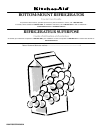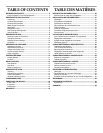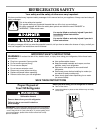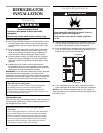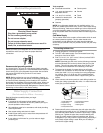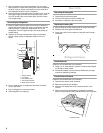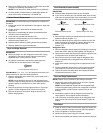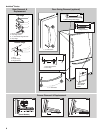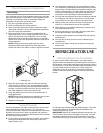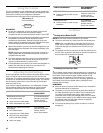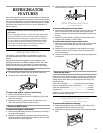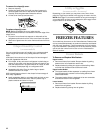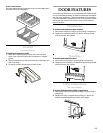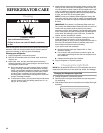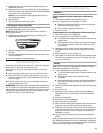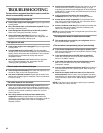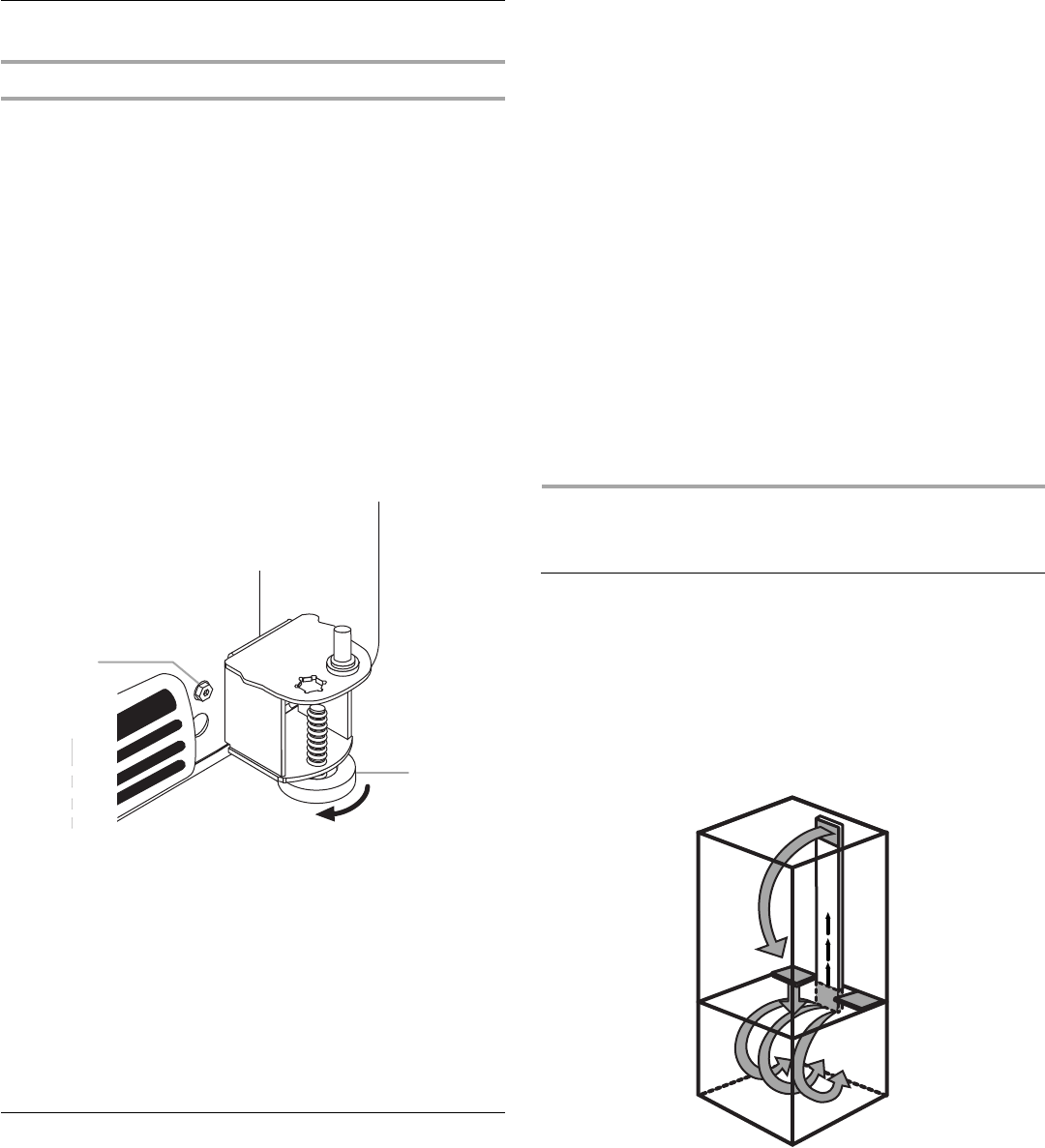
9
Door Closing and Alignment
Door Closing
Your refrigerator has two front adjustable rollers which are at the
base of the refrigerator on either side. If your refrigerator seems
unsteady or you want the doors to close easier, adjust the
refrigerator's tilt using the instructions below:
1. Plug into a grounded 3 prong outlet.
2. Move the refrigerator into its final position.
3. Remove the base grille and the bottom hinge covers (see
“Base Grille” section). The two roller adjustment screws are
part of the front roller assemblies.
4. Use a screwdriver or ³⁄₈ in. hex driver to adjust the roller
adjustment screws. Turn the roller adjustment screw to the
right to raise that side of the refrigerator or turn the roller
adjustment screw to the left to lower that side. It may take
several turns of the roller adjustment screws to adjust the tilt
of the refrigerator.
NOTE: Having someone push against the top of the
refrigerator takes some weight off the roller adjustment
screws and rollers. This makes it easier to adjust the screws.
5. Open both doors again and check to make sure that they
close as easily as you like. If not, tilt the refrigerator slightly
more to the rear by turning both roller adjustment screws to
the right. It may take several more turns, and you should turn
both roller adjustment screws the same amount.
6. Lower the stabilizing foot by turning it clockwise until it is
firmly against floor.
NOTE: Drawer freezer models have a stabilizing foot on each
side which must be lowered by turning clockwise.
7. Replace the base grille.
Normal Sounds
Your new refrigerator may make sounds that your old one didn’t
make. Because the sounds are new to you, you might be
concerned about them. Most of the new sounds are normal. Hard
surfaces, such as the floor, walls, and cabinets, can make the
sounds seem louder. The following describes the kinds of sounds
and what may be making them.
■ If your product is equipped with an ice maker, you will hear a
buzzing sound when the water valve opens to fill the ice
maker for each cycle.
■ Your refrigerator is designed to run more efficiently to keep
your food items at the desired temperatures and to minimize
energy usage. The high efficiency compressor and fans may
cause your refrigerator to run longer than your old one. You
may also hear a pulsating or high-pitched sound from the
compressor or fans adjusting to optimize performance.
■ You may hear the evaporator fan motor circulating air through
the refrigerator and freezer compartments. The fan speed
may increase as you open the doors or add warm food.
■ Rattling noises may come from the flow of refrigerant, the
water line, or items stored on top of the refrigerator.
■ Water dripping on the defrost heater during a defrost cycle
may cause a sizzling sound.
■ As each cycle ends, you may hear a gurgling sound due to
the refrigerant flowing in your refrigerator.
■ Contraction and expansion of the inside walls may cause a
popping noise.
■ You may hear air being forced over the condenser by the
condenser fan.
■ You may hear water running into the drain pan during the
defrost cycle.
REFRIGERATOR USE
Ensuring Proper Air Circulation
In order to ensure proper temperatures, you need to permit
airflow between the refrigerator and freezer sections. As shown in
the illustration, cool air enters the freezer section through vents in
the rear and top. The air flows forward through the freezer section
and recirculates under the freezer floor. Cool air enters the
refrigerator section through the top, flows down and across
shelves to the doors and recirculates to return air vents at the
bottom.
Do not block any of these vents with food packages. If the vents
are blocked, airflow will be prevented and temperature and
moisture problems may occur.
IMPORTANT: Because air circulates between both sections, any
odors formed in one section will transfer to the other. You must
thoroughly clean both sections to eliminate odors. To prevent
odor transfer and drying out of food, wrap or cover foods tightly.
1. Roller Adjustment Screw
2. Stabilizing Foot
1
2



